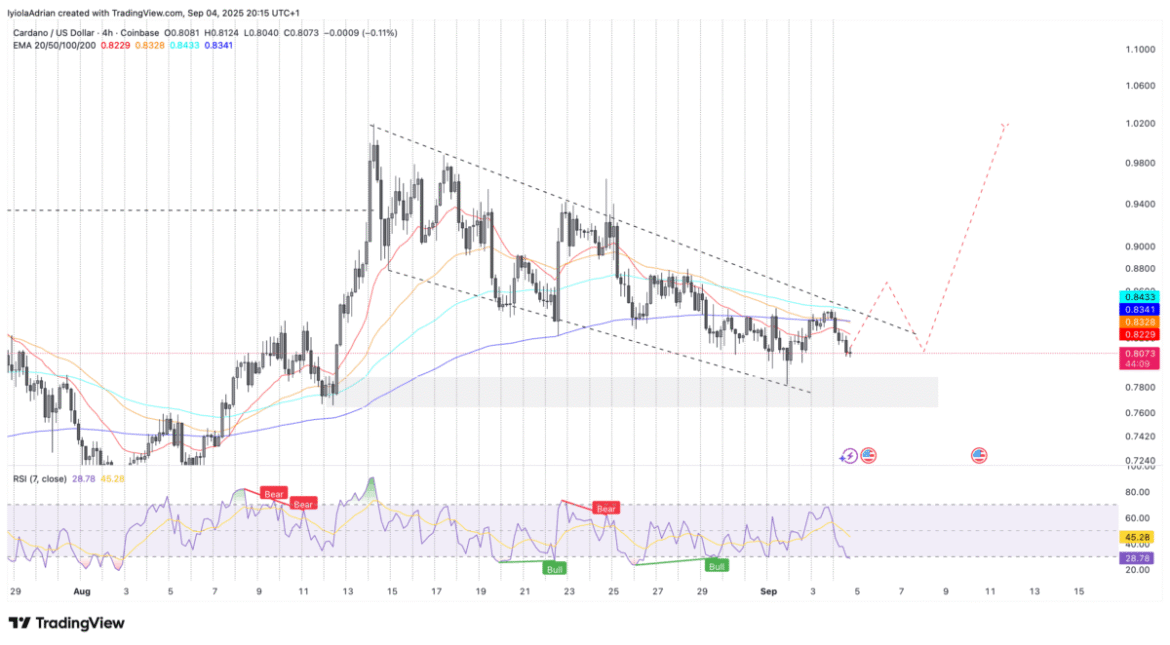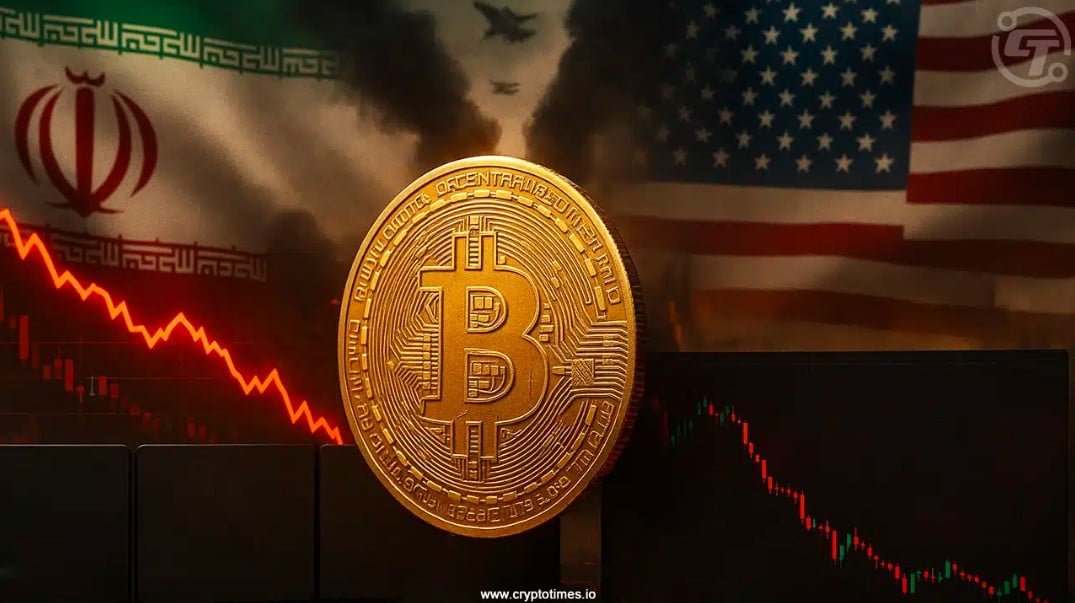Cardano’s native token, ADA is in the spotlight today as its price shows signs of possible recovery with a breakout after being affected by past months of controversy.
Currently, the token is trading for $0.80 and ending towards a demand zone at $0.78. Analysts believe this point is a key zone for a buy momentum which could push the token to break out, possibly to $1.50 if the momentum is strong.
Meanwhile, this optimism follows weeks of drama involving Cardano’s founder Charles Hoskinson and the Cardano Foundation that initially push down the price.
Cardano ADA Approaching Possible Breakout | Source: TradingView
The chart above shows that since mid August, Cardano has been moving in a downward channel, with continued lower hives and lower lows. With the recent major news settling a major beef about the ecosystem news the market sentiment is expected to turn positive.
Major Beef within The Network
The conflict started when accusations surfaced, claiming that insiders had misused 300 million ADA tokens, which was worth about $600 million at the time. Hoskinson reacted to the claim. He said that the Cardano Foundation had “ruined the integrity of the ecosystem.”
During a live session on X, he even suggested dissolving the Foundation and redirecting its assets to groups that could support Cardano’s future better.
To fight back, Hoskinson ordered an independent audit. After several delays, the result was shared and found no evidence of theft or misuse. The report explained that the unredeemed ADA from early investors had been placed in a trust fund called Intersect. It was created by Input Output and EMURGO, to guide Cardano’s growth.
The Foundation responded that it appreciated the clarity in the report and said its hopes the “outcome provides peace of mind for the community and helps Cardano move forward.” However, there’s no apology statement directed to Hoskinson so far. Hoskins has also demanded “NO Confidence” Vote over this $600 million dispute.
Price Drop As Trader Take Auction
Meanwhile, the market was quick to react to it. Prices dipped and sentiment turned bearish. Even on chain data showed that many traders were growing cautious. But despite this, the support level at $0.78 has held strong.
Moreover, the Relative Strength Index RSI, is at 45. This suggests that the sell pressure might soon be over, and the bulls might soon take over the market. In addition to that, the token is trading above its 50-days average of $0.83 and its 200-days average of $0.73, which is a strength signal over the long term.
Crypto analyst, Ali Chart, also confirmed this bullish outlook in a post on X. “Cardano $ADA could see another dip to $0.80 before attempting a bullish breakout!” he tweeted.
Furthermore, another major issue was also resolved. A separate review by law firm McDermott Will & Schulte and audit firm BDO examined Cardano’s voucher redemption program.
The investigation found that 99.7% of ADA vouchers had been redeemed and confirmed no insider manipulation. Hoskinson said the accusations “went too far” and asked for apologies, hoping the community could finally move forward.
Also Read: Bitcoin Options Signal Bearish Trend Ahead of $4.5B Expiry


